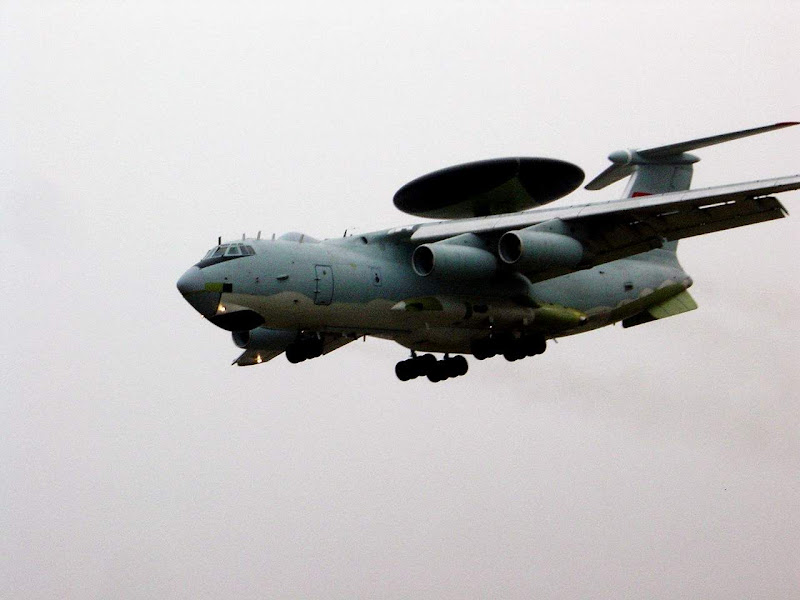
In the middle of February 2008, AVIC-I announced that its one strategic "Key Project" has been successfully and totally completed and the leaders of China and PLA, including President Hu, have send their warm congratulations to this Chinese largest Aviation Manufacture.
This piece of news appeared in the official paper media of Chinese Aviation Industry--"Chinese Aviation Daily", and then was transferred throughout Chinese main web news portals.
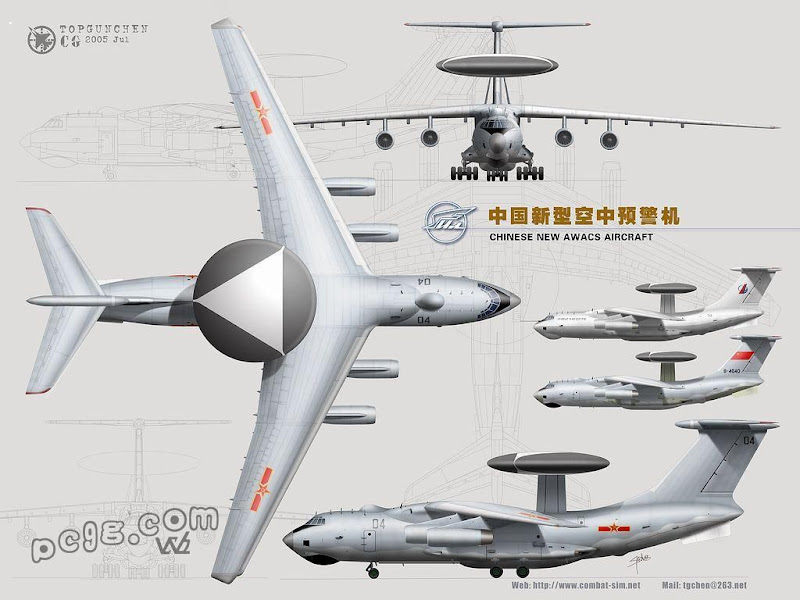
Of course, the "Key Project" is not clearly introduced in the opened news. But the salutation from Chinese Top leaders, 4 members of CPC central committee including President Hu Jintao, indicates that the so-called "Key Project" is an strategic aerial weapon system and has great value to PLA. Chinese Defense Minister Gen. Cao Gangchuan even expressed thanks for keeping the honor and dignity of China.
The answer is only one, "Key Project" is PLA C4ISR central role--KJ-2000 AWACS and the success shows that 4 KJ-2000s manufactured by AVIC-I have entered service in PLA Air Force in 2008.

In 2000, China once planned to purchase Israel Phalcon AWACS, but later the deal was terminated by United States. China always considered it as a great shame and initiated its own AWACS project.
Except the congratulations, some interesting truths can be investigated from the news.
In his written felicitate letter, Guo Boxiong, the deputy Chairman of CPC central military Committee, confirm the great achievements of AVIC-I but urged the pushes of later testing for technological maturity. Obviously, the words from General Guo show that PLA's AWACS still has problems although they have entered PLA.
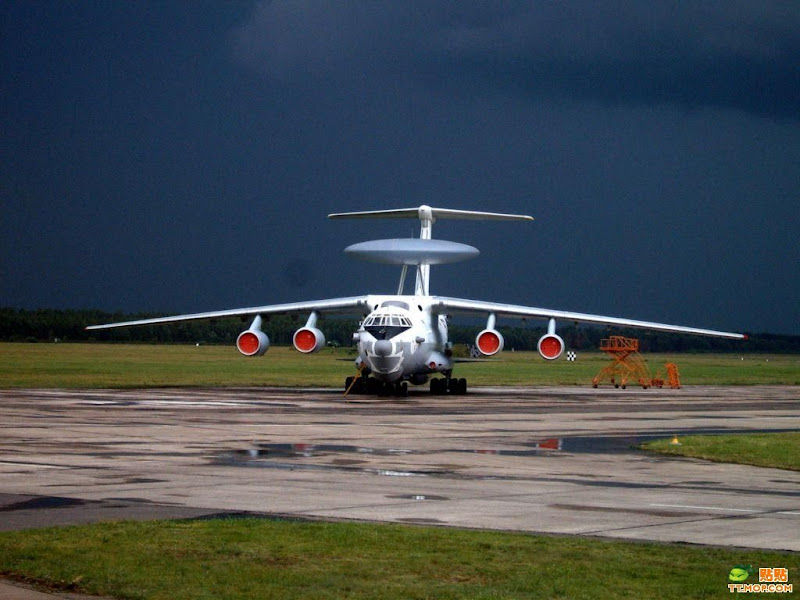
Cao Gangchuan also hoped that related manufactures shall especially focus the quality of system and simultaneously pursue the latest development in aerial early warning systems. His words also proved that the performance of KJ-2000 is not stable because of lots of new technologies involved.
Hong Kong Medias, like Phoenix TV and China Review Agency, quoted this news and added some new contents. It declared that KJ-2000 can detect F-22 in range of 200KM. AVIC-I has no comments on this performance describe but it is generally believed as a sensationalized propaganda.
Although PLA's KJ-2000 has unclear operational capacity and too limited number to be deployed in highly-dangerous area, the extinguished growth of PLA Air Force is need to be focused.
According to a imperfect statistics, now PLA has owned over 450 third generation fighters, including 11 Su-27/J-11/Su-30mkk/Su-30mk2 regiments (270+ fighters, with 24 fighters each regiment), 4 J-10 regiments (96+ J-10) and 4 JH-7/JH-7A regiments(96+ JH-7/A). With the support of KJ-2000 and other systems, PLA is going to grasp the air superiority over all Asian countries.
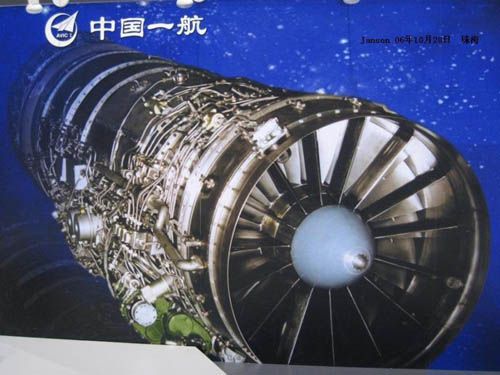
WS-10 Turbofan engine
Recently, AVIC-I announced that its "Taihang" (WS-10) has entered the mass production stage and been ready for being installed with PLA Air force main fighters, such as J-10 and J-11.
According to AVIC-I news resource, AVIC-I Shenyang Aero-engine Design & Research Institute (SEDRI), known as No.606 Institute, has resolved series of technological problems and the number of provided WS-10A engine, the production model, has reached the highest in history. "Taihang" Turbofan Engine has been finalized its prototype development and entered the batch production for PLA Air Force.
AVIC-I did not leash that what the exact kind of combat aircraft will use WS-10A. But it may be estimated that PLA Air Force's J-11B but not J-10 is the first user. J-10's rear fuselage is designed for installing with AL-31F turbofan engine, so WS-10A has to be decreased the maximum diameter for matching the size.
AVIC-I said that the SEDRI has achieved the sale of RMB 4.78 million (USD 66.4 million). Considering of the modern turbofan engine usually costs USD 2.7-3 millions, SEDRI almost provide 15-20 WS-10A engines for 7-8 J-11B dual-engine heavy air superiority fighters in last year. Certainly, future WS-10 manufacturing will be transferred to Liming Engine Corporation.
AVIC-I SEDRI also admitted that variants of WS-10 engine has been finished its design and solved relevant technical readiness. The most urgent one is the size modified and thrust enhanced WS-10, called as WS-10B for J-10 fighter and it has been granted testing approval successfully. AVIC-I SEDRI said that the WS-10B has been ready for Combat Aircraft Installation.
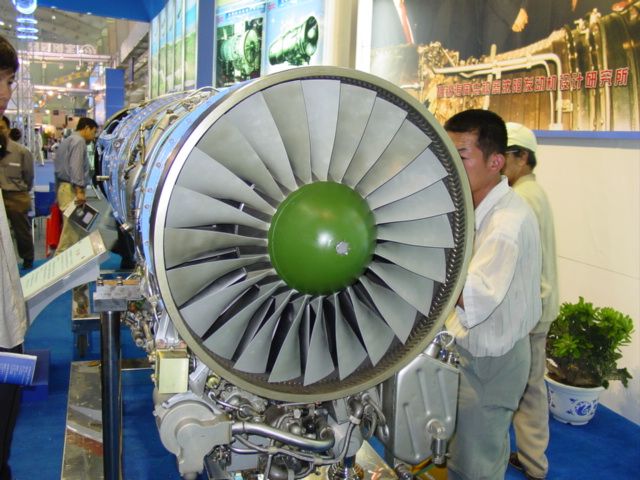
"Kunlun" Turbo Engine (WP-14)
SEDRI also introduced that "Kunlun" Turbo Engine (WP-14) improved model WP-14II has passed the technical examination and effectively ensure the delivery for new members of J-8II and J-7 family. China resource indicated that WP-14II’s maximum thrust has reached 8400 kg.
In addition, AVIC-I Xi'an Aero-engine (group) LTD finally was granted the production approval of "Qinling" WS-9 medium thrust turbofan engine, a copy of RR Spey MK202 imported for JH-7 fighter in 1970s. In 2005, WS-9 turbofan engine got its design approval after the project initiation in 1994.
Actually, PLA Air Force has been suffering from realizing Spey MK202 engine indigenous production for over 30 years. The success of WS-9 engine will greatly speed the deploying of more JH-7/JH-7A attackers. Comparing with original prototype engine, Xi'an Aero-engine (group) LTD has made modifications of new annular combustor, 4-stage fan, 10-stage high pressure Compressor and convergent—divergent nozzle.
In the middle of November, AVIC-I on its website announced that Shenyang Aircraft Designing Institute is going to delivering the detail design drawing of "Key Model" with AVIC-I’s other preponderant Institutes with advantages.

An artist's imagnination about China's future fighter

A realistic 3D image generated by software, was once believed as China's next generation fighter.
In the news story, this "Key Model" is eyed by SAC (Shenyang Aircraft Corporation)'s heads as a significant milestone in AVIC-I's Development. This so-called "Key Model" is probably one sub item of China's next generation air combat system project, which is a family jointly designed by SAC and CAC (Chengdu Aircraft Corporation), additionally including XAC (Xi’an Aircraft Corporation) and FAI (First Aircraft Institute) of AVIC-I possibly.
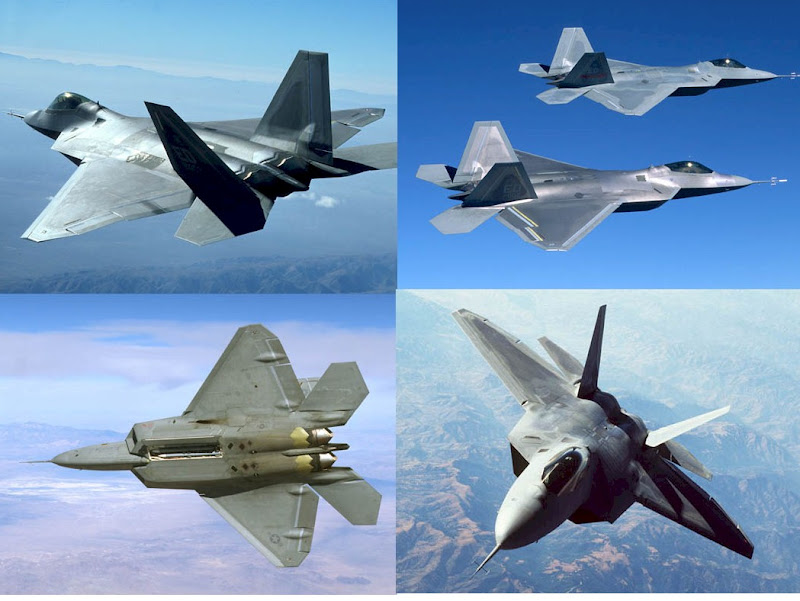
PLA admits F-22's great advantages, but does not plan to follow U.S.' way.
Unlike F-22's 4S characters, China has been eager to find an unusual countermeasure method in Network-Centric Warfare age. China foresees that a wide and integrated air situational awareness and combat system can face the challenge from stealth fighter. So China's next combat aircraft would not be one single fighter but an integrated JACS (Joint Air Combat System) family, which includes stealth strike fighter, Long-Range AA missile Launching platform and anti-stealth UAV.
The new striker probably has a low observation (RCS <0.3 href="http://picasaweb.google.com/cuteftpster/CoolMilitary2/photo?authkey=WeThqOU8RK4#5141495726054384626">
"Dark Sword" UAV
Although SAC's "Dark Sword" has displayed China's pre-research in UCAV area, China dose not trust UCAV can enter real combat in next 20 years.
At present J-10 has entered mass production and J-11B is near its final stage. When Russia's new Su-35 introduced in MAKS 2007, PLA Air Force evaluates it as the most advanced improved 4th generation fighter, comparing with Typhoon and Rafael. But China has no interests on Su-35 because J-11B/BS is enough to PLA Air Force, which proposes to pay more energy on revolutionary combat aircraft.

Russia's New Su-35 in MAKS-2007
Meanwhile, AVIC-I dose declare to become one of world Top 500 Corporations in the year of 2010. So AVIC-I, the most powerful aviation enterprise in China, prefers to re-organize forces from its subsidiaries for PLA’s future airpower and then acquires greater capital support from China Government.

Mr. Zhang Qinwei, Director of COSTIND
November 15, China's COSTIND (commission of Science Technology and Industry for National Defense) issued "Provisional Measures for Military Enterprises Shareholding Reform’s Implementation". This behavior showed that China has permit domestic listed corporation to buy and reform Military enterprises.
The "Provisional Measures" have cleared that Chinese military firms can be reformed and opened to public under 4 types: state-owned, state absolutely holding, state relatively holding, and state sharing.

After COSTIND's authorization, present domestic state-controlling-holding listed companies can deal with state-run military enterprises by unitary or partial acquisition and re-organization.
To future domestic listed firms carrying on military products, the new "Provisional Measures" especially regulate special articles, including:
No changes of Controlling Shareholders can become effective without reporting to COSTIND and carrying procedures for approval;
The alternation of board chairman and general manager must be recorded on COSTIND;
The recruitment of oversea independent directors must be recorded on COSTIND;
The significant acquisition behavior initiated by buyer, who will hold over 5% percent sharing of listed company, must declare to COSTIND.
Besides, foreign capital also gets clear ways of entering Chinese military industrial area. The "Provisional Measures" regulate that state-owned and state absolutely holding are forbidden to be sold to foreign capital; state relatively holding military firms are limited to foreign investment and re-organized state sharing military companies are totally opened for foreign investors.
Recently, series of regulations have been issued by COSTIND for delivering more instructions on more reformative involvements from non-state-own firms and foreign investment.

In September, a screenshot of XAC (Xi'an Aircraft Corporation) internal CATV news showed that China is producing a newest variant of H-6 bomber family to satisfy PLA Air Force's demands of long range strategic bombing and air striking.
This variant is called as H-6K in PLA Air force. Letter "K" represents the "Air Striking Platform" (Chinese Pinyin: Kongzhong-daji-pingtai). The distinguished improvements include: new 6 under wing Hardpoints, more powerful engine, round glass-in nose replaced by radar radome (new PD radar inside), Datalink Device and Infrared recognition Pod under aircraft nose.
The new H-6K has 6 under-wing pylons to carry China's 3000 km land-attack cruise missile. With imported Russian D-30 engines, H-6K can patrol in the air defense circle in China inner mainland for longer lime and use long-range cruise missile to attack U.S.'s Bases located in Guam. Certainly, XAC modified H-6 fuselage to contain larger turbofan engines.
Besides, H-6K also has ability to fire YJ-12 anti-ship missile at stand-off ranges to attack U.S. Aircraft Carrier Groups in west pacific. Noticeably, PLA's H-6K can carry 6-8 ultra-long-range Air-to-Air missiles to hunt enemy's Airborne Early Warning systems, like E-2 and E-3.

The glass-in nose is replaced by a lightning-proof radar radome so H-6K has a re-designed aircraft nose. Inside the radar radome, H-6K equipped with a powerful PD radar, which integrates navigation, terrain following and aiming for launching missiles. And H-6K has an upgraded cockpit than before and incorporates a more advanced avionics integrated with power, flight and fire control.
On the H-6K's back near cockpit, XAC installs 2-3 blade antennas, which are probably are parts for datalink system for launching ultra-long-range Air-to-Air missile, called as "ShaShoujian" weapon in PLA. Via Datalink, H-6K can receive object information from KJ-2000 AWACS and silently fire AA missiles to attack Air Boren Early-Warning Systems.
Strangely, H-6K has an Electro-optical detecting pod to replace former cylindrical radome under the nose. The device is eventually some kind of forward looking infrared system for navigation and recognition and weapons delivery. Another choice is that H-6K will use forward looking infrared system for anti-submarine warfare.
Named with "Air Striking Platform", H-6K can use its bomb capacity advantage to carry PLA's air launched torpedo for detecting and destroying underwater submarines in Chinese East Sea and South Sea areas. And H-6K can also share its information with PLA Navy's Ka-28 and Z-9 helicopters in fleet anti-submarine warfare.
Since lots of design modifications and imported power plant, the production is in a very low speed on 2-3 H-6K in one year. According to resources, XAC has produced 2 H-6K for PLA’s evaluation and testing. Although basing on a 40-year-old design, H-6K is still a remarkable platform for its multi-performance in modern warfare when PLA adding new technologies on it.
China's Z-11 Armed helicopter (Z-11W), which is a Copy of AS350 Helicopter and jointly produced by Changhe Aircraft Corporation (CAC) and China Helicopter Design and Research Institute, has successfully passed the technological pre-qualification on August 31. The website of COSTIND released this piece of news on September 4.

Z-11W helicopter is a variant of Z-11 2-ton class light Utility Helicopter which is usually believed to be a Chinese "pirate" of French AS350 "écureuil (Squirrel)". Since the Birth of Z-11 in 1994, it has been facing a converging attack from domestic and international Markets.
Actually, PLA army needs light Utility helicopter but not the early inferior Z-11, which can not catch up its original French model born 20 years ago. So Z-11W is modified from an enhanced Z-11MB1 platform powered with ARRIEL 2B1A engine and is equipped with systems for air assaulting, like fire control system, V/UHF frequency-hopping radio and improved VEMD (Vehicle and Engine Multi-function Display) avionics. Besides, CAC once announced that Z-11W armed helicopter can carry 4 HJ-8 anti-tank missile and rocket launching pods.
And in overseas market, Z-11 is still in constraint for its indigenously copy design without any license from Eurocopter. It makes a truth that Z-11's exportation was indeed in embarrassing position for searching steady-going clients.
From 2005, CAC has been contacting foreign countries for Z-11's selling. November 22-23 2005, Argentina Air force 3-member delegation once visited CAC for consulting Z-11's exportation and building localized assembly line.
But resources said that the project was frozen under the pressure from Eurocopter. But CAC did dot abandon this opportunity and recently organized a Z-11MB1 helicopter flight demonstration on June 10 2007 in Argentina for its Air Force.

Photographed by Juan Carlos Cicalesi
And Z-11W's passing qualification showed that CAC is speeding in looking for domestic or international buyers for its Z-11 families. And CAC hope that Z-11W can win PLA army's appreciation to play reconnaissance role like OH-58D for ground forces and attract potential foreign buyers from third-world developing countries.
When Z-11W passed the qualification, resources from Philippine in September says that its Air force will spend 460 million RMB to replace its Vietnam-war-time copters from 8 multi-function helicopters from China. Although the exact model is unclear, but the unit price tells that it is probably Z-9, which is manufactured from HAC (Ha'erbin Aircraft Corporation).
August 28 Chinese AVIC I in Beijing announced to establish SAC Civilian Aircraft LTD and CAC Civilian Aircraft LTD.SAC Civilian Aircraft LTD is located in Shenyang and jointly ventured 500 million RMB by SAC (40%), XAIC (45%) and CATIC IC (15%). While CAC Civilian Aircraft LTD is registered in Chengdu and invested with 500 million RMB by CAC and other same two investing parties in identical contribution.
SAC (Shenyang Aircraft Corporation) and CAC (Chengdu Aircraft Corporation) are the most powerful manufactures of military fixed wing aircraft, such as J-10 and J-11 fighter.
AVIC I's action in civilian manufacturing area indicated that Chinese aviation industries are drastically abandoning its previous planned economic operation mode in military system production. Since 1980s, SAC and CAC have been producing aviation components under sub-contract with western aircraft manufactures like Boeing and Air Bus. What ever SAC or CAC, has tasted the sweet in oversea cooperation and hope to gain bigger part in the big cake of China future aviation market.
After market research, AVIC I believed that in next decade China's domestic air transportation will boom over 4 times and need other 1600 airliners, which presume 150-180 billion US$ market, only next to U.S.; and in 2050 China will be supposed to demand 3000 jetliners and freights, which valued to about 350-400 billion US$.
XAIC (XI'AN AIRCRAFT INTERNATIONAL CORPORATION SZSE:000768) is the first public listed enterprise initiated by XAC (Xi'an Aircraft Corporation) in 1997. XAIC is a foregoer in Chinese aviation Industry to extend civilian production in a separated firm.
Under China's rules of aviation products exportation, SAC, CAC or XAC has no permission to direct provide products to foreign buyer but via the CATIC (China National Aero-Technology Import & Export Corporation). CATIC IC (CATIC Investment Co,) is a subsidiary of CATIC to deal with investment and management consulting. The involvement of CATIC IC proves that the CATIC's influence in aviation products & technology import and export.
The merge of new entities implied that AVIC I still can not fully integrate its all commercial productive capacity just because of the contention between SAC and CAC. Resources showed that these two giants are stealthily running in PLA General Armament Department and Administration for capturing China's next generation fighter.
In civilian range, SAC and CAC are both in confrontation without any fallback. In the birth of new JVs, SAC unleashed that it has signed contract with one of Top Utility Aircraft Manufactures to produce sport aircraft. And 2 weeks ago CAC has already built up an “Aerospace Hi-Tech Industrial Zone” in Chengdu for transferring advanced Aeronautical technologies to civil field.
Further, manufacturers in China are apt to trade with foreign corps and cast off CATIC's manipulation and taking percentage of deals. But it is still unrealistic in exist system. The newly founded set-ups can be deemed as a compromise among different sides in AVIC I.
August 21 in Russian MAKS 2007 Airshow, Liang Zhenhe, who is the senior vice president of AVIC II, announced that China and Russia has reached an agreement to jointly develop a fresh new basic trainer for defense and civilian market.
Liang says that the Chinese AVIC II and A.S. Yakovlev Design Bureau will cooperate under the rules of joint investment and co-development but risk and profit sharing. AVIC II and Yakovlev will separately invest 50% of the program and respectively build an assembly line in China and Russia. But Liang did not provide the aircraft model and detailed investment amount.
According to Liang's words, the prototype of new basic Trainer will be produced in the year of 2008 and be finished its first flight in the first half of 2009. The roadmap of Sino-Russia trainer program is to achieve airworthiness certificates in correspondent domestic markets, then the aircraft will got FAA's EAC(Experimental Airworthiness Certificate) and JAA's JAR-23(Joint Aviation Requirement) certificates so as to enter international trainer market with full capacity.
Liang Zhenhe expresses that great potentiality exists in Sino-Russia aviation cooperation just because China has expanding aviation market excited by speedy economic growth and Russia has obvious technological predominance to support China's requirements. Liang says that the China domestic market will at least demand over 300 basic trainers but some common problems need to be resolved, such as building up a full after service system for aircrafts.
The assembly line in China will probably be constructed in HongDu Aviation Industry Group, which was previously called as "Nanchang Aircraft Company" and has been the main trainer manufacturer for PLAAF. The well-known CJ-6 basic trainer has been produce over 3000 aircrafts by Nanchang Company and its exported variant BT-6 won good public praises in western users.
Although Liang did not tell the aircraft model, his announcement still verified HongDu's three years before cooperative proposal on YAK-152 with Yakovlev. But no information about YAK-152K can be found from the official website of Yakovlev Design Bureau.
From Hongdu's inside reports, it can be discovered that Hongdu had organized experts to evaluate the program of YAK-152K (YAK-152's Chinese Version, K means China) in 2004. The report estimated that the whole investment was about 6.8 million US$ and Target cost of single aircraft would be 179,200 US$ (RMB 1.36 million) then price to be 224,000 US$ (RMB 1.7 million).
In August, news from COSTIND website showed that Zhang Yunchuan, minister of COSTIND(Commission of Science Technology and Industry for National Defense), recently visited Xi'an Aircraft Industry Group for inspecting the proceeding of Heavy Airlift Assembly Line Construction. His visit indicated that the Final Assembly Line of PLA future Heavy Airlift has been obtained by Xi'an Aircraft Industry Group, which is the manufacturer of well-known JH-7A attack fighter.
China's aspiration for large Air Transporter is pursued in both ways of military and civilian uses. The civilian aircraft, is to satisfy the boom of China's future civilian air transportation. Provinces with Aviation Industries, such as Shanghai, Shanxi, Tianjin, Sichuan,etc, all aim the Large Jet Plane or Heavy Airlift as a great opportunity to upgrade their industrial and economic system. ACAC(AVIC I Commercial Aircraft Company), based in Shanghai, became the developer and manufacturer of ARJ21, a 70-80 seats class regional Jet. ARJ21 is seen as China's first step in 100 ton class civilian aircraft. And in 2006, An A-320 final assembly line project was introduced in Tianjin.
Being an inland military Aircraft and Electronic Industries base, Shanxi had been in embarrassed position since Tianjin and Shanghai's rising in aircraft manufacturing. Shangxi local authority even urged "Input Provincial Power to get the project of Heavy Transport Aircraft". Now Shanxi is seemed to realize its final goal. ShanXi province and Xi'an city will use this occasion to speed the military industrial base development in Western area of China inland.
The military heavy airlift is defined by administration as "National Significant Project", not as usual "National Key Project". In fact some Chinese resources showed that China central government has counted military airlifter as a future strategic military system and a crucial decision for fully waking China's Aviation Industries in next decade.
In his visit, Minister Zhang urged that the R&D on Heavy Airlifter should be based on the mature and reliable technologies, but its performance can approach the international advanced transport aircraft with Chinese independent innovative technologies. From his words, it can be summarized that China's future Military Heavy Airlifter Prototype will be designed on Russia's IL-76MD. But China's airlift aircraft will has an expanded size and payload capacity, and then equipped with 4 high-Bypass ratio turbofan engines (from FWS-10), improved electronic devices.
In general, PLA's next generation lifter will exceed Russia's IL-76 and Japan SDF's being developed C-X transport aircraft and be close up to the "Globalmaster III". PLA’s Heavy Lifter’s Possible Specifications can be described as below:
Crew: 3
Payload Capacity: 60,000-65000 kg
Length: 49 m
Wingspan: 50 m
Height: 15 m
Wing area: 310 m2
Empty weight: 100,000 kg
Max takeoff weight: 220,000 kg
Power: 4× Chinese-made High-bypass turbofans
Maximum speed: 750-800 km/h
Range: (with max payload) 4,400 km
Service ceiling: 13,000 m
For years, Xi'an Aircraft Industry Group has been absorbing foreign aviation technologies and QC(Quality Control) & QA(Quality assurance) measurements by industrial subcontracting with Boeing and Airbus. Meanwhile, AVIC I is preparing the correspondent attached technological projects. Such as CARDC (China Aerodynamics Research & Development Center) has achieved breakthrough in "Turbofan Engine low-speed Simulating Testing Technologies" for Airlifter high bypass engine. Besides, in 2008 China's research on Polyacrylonitrile (PAN) based carbon fibers will reach its milestone to produce high-performance aviation materials. PLA's future heavy airlifter will realize the shrunk aircraft empty weight by CF Compound Material made fuselage and wings.
The strategic value of China's Heavy Airlifter, is not only the great improvement PLA's forces long distance projection, but also an air platform for China's New concept Strategic Weapon System. A great conventional weapon gap between PLA and U.S. forces usually shrivels China leaders’ purpose of taking Taiwan back by forces. So Heads in China Government has been focusing on unconventional "Shashoujian" weapon system for strategic striking back.
Now PLA is very interested to Boeing ABL project and FALCON Small Launch Vehicle. Resources in PLA unleashed that the future heavy transportation aircraft will play as important air platform in fighting against with U.S. advanced stealth fighter and cruise missiles. It can be speculated that High-power microwave weapon and some kind of directed energy weapon will be installed on aircraft to jam and destroy air objects, like F-22, F-35 or Tactical Tomahawk.. Base on technological obstacle, Chinese air platform can not use COIL laser for anti-ballistic missile but will have compact laser self-defense system to defend enemy air-to-air missiles.
Like FALCON program tested on U.S. Air Force C-17, China's transport aircraft will become a rocket or ballistic missile aerial launching platform. China has demonstrated its air-launched ballistic missile in 2006 Zhuhai Airshow. In a possible conflict with U.S. in west pacific, PLA will have more striking options by strategic aerial platform, such as anti-craft carrier ballistic missile or anti-satellite space weapon.
One Blog on Chinese Internet one week before appeared an article written by an employee from the Technological Institute of AVIC I Aviation R&D Center. The content is a text record of a visiting in Shenyang Aircraft Corporation (SAC). Now the article has been forced to be deleted just because several hidden projects were uncovered by the online text.
From the blog resource, it can be discovered that SAC is busy on the carrier-borne fighter technologies developing, designing the 5th generation fighter and even jointly developing strategic “anti-stealth” UAV, other than the manufacturing of J-8F/G and J-11 fighter.
SAC now is still improving the J-8II fighter. At present, J-8B/C/H have equipped with PL-11 air missile (a Russian missile copy, range from 20 to 22 km) to archive the look down/shoot down ability. SAC has produced J-8F with new air avionics to attack two objects simultaneously with PL-12 active radar missile (55 km). J-8G, an anti-radar variant, can perform a “wild weasel” task with YJ-91 active anti-radar missile. And JZ-8, the newest one of J-8 family, is modified with optical-electronic reconnaissance pods and surface-air datalink.
The blog said that the J-11B project is initiated in June 2002 and SAC is developing carrier-borne fighter J-15 from J-11B. But the design and production of landing hook, tail centrum shortening and folding wing are technical difficulties blocking J-15’s came out.
“Snowy Owl”, is a China’s fifth generation fighter project name firstly known by outside world. SAC’s fifth generation fighter is not beyond some analyzers’ prediction, such as triplane configuration with canard, low observation (RCS <0.3 square meter), Supersonic cruise and super mobility.
In SAC, the choice of foreplane arouses a drastic dispute. Some points sited the foreplane’s compromise to fighter stealth, which is summarized by U.S. After its research, SAC however accepted the eclectic stealth performance affected by canard configuration, because PLA Air Force has no necessary to keep a global air striking ability like U.S. Air Force.
SAC admitted the superiority of U.S F-22 and F-35, so it is carrying a Sino-Russia joint-project: “Supernal Hawk” strategic high Altitude and Long Endurance (HAE) Anti-Stealth UAV. The so-called anti-stealth UAV actually is an air-based bistatic radar warning system. “Supernal Hawk” UAV will probably coordinate with PLA “KJ-2000” AWACS or establish a warning network by 2-3 UAVs. The typical deployment method is to place one UAV forward on the high altitude above the west pacific to supervise the directions of Japan and Guam. The UAV can hold the height advantage to search F-22 or F-35. The location information of objects will passively transferred to rear AWACS or other UAV and then guide missile attack.
The handicaps of the project however are aeronautic design, long endurance turbofan engine and sensor. So SAC plans to get Russian’s engine technologies and aircraft design experience to satisfy large-scale Drone’s HAE performance. And the sensor of UAV will presumably be china-made large Active Electronically Scanned Array Radar with conformal Antenna.
In 2006 Zhuhai Airshow, SAC demonstrated a concept combat UAV model named “Dark Sword”. Now it has been clear that China is fairly active on UAV research area where the Chinese Aviation Industries can greatly reduce technology gap with western countries.
This article published in Jane's Defense Weekly
Details have emerged of China’s next generation J-11B heavy air superiority fighter aircraft, a further development of Sukhoi’s Su-27SK (Chinese designation J-11) that ended production in 2004 ahead of its planned run.
Shenyang Aviation Corporation (SAC) assembled 95 J-11 fighters from imported Russian components, although the original project had called for 200 aircraft, and it is likely production was stopped in anticipation of the improved J-11B.
Although based on the Su-27SK, the latest incarnation has substantial improvements including a reduced radar cross-section (RCS), strengthened airframe and an improved fire control radar as well as new flight control system, glass cockpit and engine.
The improvements are planned to nake the aircraft to a fourth generation platform; the Yanliang Flight Test Center currently has three J-11B under testing (No 521, No 523 and No 524).
The most significant change for the aircraft is improved stealth; the changes are planned to bring the RCS from the 15 sqm of the Su-27 to under 5 sqm and possible as low as 3 sqm.
The change is not to the dynamic shape of the aircraft but involves the modification of the air intake lip with a radar wave shield and the installation of radar absorbing materials on the intake interior. In addition the RCS will be reduced with Chinese made signature reduction paint.
The strengthening of the airframe, a key aspect since the life expectancy of the aircraft has been criticised by the People’s Liberation Army Air Force, has been achieved through wind-tunnel tests of weapons carriage.
Additionally, the empty weight of the aircraft has been reduced by about 700 kg through the use of composite materials.
It is believed a further 10,000 hours has been added to the life of the aircraft compared with the Su-27SK.
The radar installed on the J-11B is believed to be more powerful than the Type 1473 installed on the J-10; it is estimated to be able to track 20 targets and simultaneously lock onto six targets.
J-11B will incorporate a quadruply-redundant digital fly-by-wire flight control system with mechanical back-up. Additionally, the aircraft has a fully glass cockpit but there are two variants - a reflecting head-up display (HUD) with four multi-function displays (MFDs) and a holographic HUD with three MFDs.
It is likely the former cockpit is for ground attack and the latter for air combat. The new cockpits integrate fire control radar, electro-optic countermeasure pods and infra-red search and track.
The improved radar and cockpit have allowed for the integration of newer weapons such as the CATIC PL-12 active radar-guided air-to-air missile.
The J-11 AL-31F engine will be replaced with the WS10A turbofan, providing longer lifespan and reduced fuel consumption.
Beyond J-12, China has plans for a carrier borne J-13, unlikely to be realised before 2015; the J-14, which is planned as a competitor to Lockheed Martin’s F-22, on the distant horizon at 2018; a two-seat J-11BS (2009); a naval J-11J (2010) and two-seat J-11JS (2011); and an improved J-13G and a navalised J-13J (2017).
More aircraft and unmanned combat aerial vehicles are being considered for even further in the future but new aircraft types will need to rise above the financial, political and industrial challenges that are likely to plague the programmes.

The JL-8 Jet Trainer's manufacturer is Hongdu Aircraft Corporation, which is under AVIC-II. The exportation designation name of JL-8 is K-8. It has been known that the K-8 has been exported to some developing countries in africa and south Asia, such as Sri Lanka, Zambia, Egypt, Zimbabwe. Besides, Hongdu Aircraft Corporation also sold a manufacturing line to Egypt. K-8 Trainer is one of the few profitable exporting projects in China military Industries. Hongdu's next "Earning Machine" is L-15 Advanced Jet Trainer, a competitor to Hawk and K-50 Golden Eagle.




















